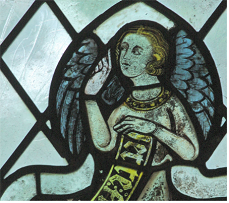Putting Medieval Glass on the Map: the case of Norfolk
Claire Daunton, University of East Anglia
In the late middle ages Norfolk was one of the wealthiest and most populous areas of England. Norfolk, and its capital Norwich, were well connected by water and road to London; and there were flourishing trading links between the ports of Lynn and Yarmouth and ports in Flanders, France and the Baltic countries.
The city of Norwich was not only a trading centre, but also an important centre for work in brass, glass and manuscript painting. As the city grew distinctive styles developed in these different arts and crafts, styles which, although showing the of London and the near-continent, were distinctive to Norwich and Norfolk.
This paper will describe two projects which are examining Norfolk glass. One is funded by the Leverhulme Trust, a trust which supports research across a range of academic disciplines. The aim of this project, based at the University of East Anglia (UEA) in Norwich, is two-fold: first, to provide a descriptive catalogue of the medieval glass of Norfolk; secondly, to examine the nature of patronage of glass, what sort of people paid for stained glass windows and what imagery did they choose. The second project concerns one church in the heart of Norwich, now redundant, St Peter Hungate. The aim is to turn this church into an exhibition centre for medieval art, opening with an exhibition on glass. This will be linked to a series of county trails aimed at encouraging visitors to Hungate to go out and look at the many wonderful churches in Norfolk and to start with the glass.

Claire Daunton is one of the members of the Leverhulme Trust funded project at UEA, referred to above. She is carrying out doctoral research on the patronage and iconography of Norfolk glass in the late medieval period. As evidence she is using extant medieval glass, antiquarian accounts of lost glass, and documentary evidence in wills, ecclesiastical and manorial records. Claire is based in Cambridge, at Trinity Hall.
Back to History & Heritage Programme

